
views
- Create UGC-specific social media accounts and choose 3 to 4 niches (like wellness, fashion, shoes, or organization) to tailor your UGC videos.
- Use your phone and editing software like CapCut to create 3 to 5 videos for each niche, including an unboxing, a testimonial, and a product demonstration.
- Create a portfolio using a program like Canva, include your videos and a brief bio, and network with brands on Twitter or LinkedIn to get UGC jobs.
How to Become a UGC Creator

Choose 3 to 4 niches and create UGC social media accounts. Include a username that matches your niches, a bio with your experience and interests, and an email for brands to contact you with. Example niches include skincare or make-up, organization, pets, health, wellness, or fitness, food, parenting, gaming, travel, crafting, photography, décor, tech, books, cooking, or fashion. Posting videos on social media and gaining followers isn’t required, but it can allow you to get feedback from viewers, attract attention from brands, and show brands your content is proven to work. TikTok and Instagram are typically the best sites to post UGC, but use Twitter and LinkedIn to network with brands and get bookings. When posting, try not to use tags like #UGC or #UGCcreator. Instead, use industry and product-related hashtags.

Create 3 to 5 different videos for each niche. To show you have experience in the industry, make videos for free using products you already have. For each niche, include an unboxing video, a review or testimonial, and a product demonstration. Unboxing videos are where you take the product out of its packaging and show the aesthetic beauty of the item. Review or testimonial videos are where you share your opinion or feedback about a product and make you want to buy that product after watching it. Product demonstrations might be where you present a problem and use the product as a solution or show how the product works in a creative way. You can also include a lifestyle video where you film your daily routine using the product. Incorporate TikTok or Instagram trends into your videos to make them more engaging. Look at the content the brands you’re interested in are already posting or sharing to tailor the UGC in your portfolio to their industry and target audience. To start, target your videos and photos to startups and small businesses that are starting to establish a social media presence and are more likely to need UGC.

Film videos with your phone and edit them with CapCut or InShot. Spend a few hours filming videos to add to your portfolio. Once you have more experience and receive feedback from brands, upgrade your filming setup with: A tripod to stabilize your shots. A ring light for closeups of your face or filming in darker areas. A lavalier mic or a pair of wired headphones with a mic to improve your audio quality. A colorful paper or fabric backdrop. Props that match your niche.
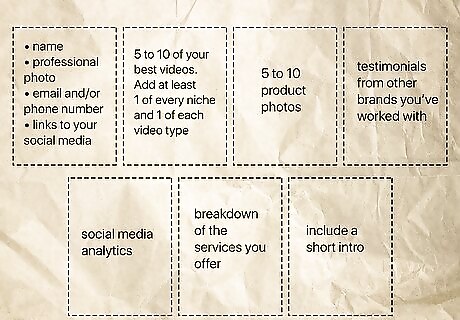
Build a UGC portfolio to send to brands. Use Canva or Google Slides to create a free visual portfolio by opening a simple professional presentation template and adding 7 pages. Page 1: Include your name, a professional photo, your email and/or phone number, and links to your social media. Page 2: Insert 5 to 10 of your best videos directly onto the slide. Add at least 1 of every niche and 1 of each video type (an unboxing, a review, and a product demonstration). Turn off autoplay on your videos and make sure that the very first video includes you talking. Page 3: Insert 5 to 10 product photos to add more value to your portfolio. Include more polished close-up photos of products and authentic photos of yourself using the product. Page 4: If you have them, include at least 2 testimonials from other brands you’ve worked with on this page. Page 5: If you post your videos on social media, include their analytics (the number of views, likes, shares, and comments) to show brands that your UGC has been proven to work. Page 6: Include a breakdown of the services you offer and (optionally) your rates. For example, you might offer 10- to 60-second short-form videos in vertical format including editing, sounds, text to screen, and voiceovers. If you write your rates, say that your “starting rate” is $150 per video and make it clear that this number is negotiable. As you gain more experience in the industry and upgrade your setup, you may be able to raise your rates. Page 7: Write a few sentences or add bullet points about who you are, how you got into the field, and what makes you stand out from other UGC creators. Include any relevant experience (like photography, videography, social media, or advertising) or certifications you might have.
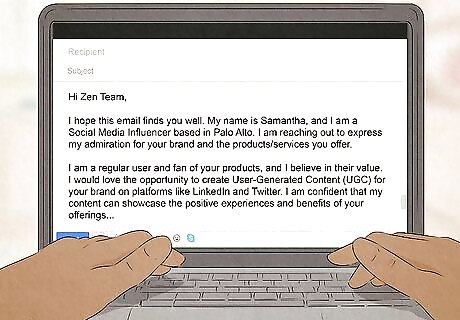
Contact brands you’d like to create UGC for on LinkedIn and Twitter. Post your portfolio and add an email to your profile for brands to contact you or reach out to brands and agencies directly. Choose brands with products or services that align with your values and fit into your daily life. Contact official brand accounts or the company’s head of marketing using their listed email. If they don’t have an email, message them directly on the site. You can also look for brands doing callouts for UGC creators on these sites and follow the instructions they provide to apply. Once you start posting more content and connecting with other UGC creators, you might not have to do so much outreach. On these platforms, you can also follow UGC creators who post behind-the-scenes details on how to negotiate brand deals and how much they get paid.

Find brand deals through networking or platforms like BeeRoll or Billo. Although third-party marketing platforms might not pay as much as reaching out to brands directly, they can help you book your first client and build up your portfolio. Fiverr Upwork Billo (US-based creators only) Backstage #Paid Insense Brands Meet Creators BeeRoll
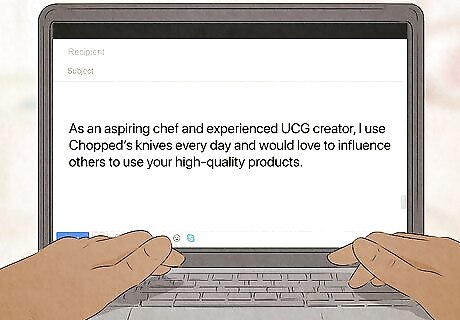
Tailor your pitch to each brand you apply to. In your pitch email or message, include a relevant attention-grabbing subject line, an overview of who you are and what you do, what they’ll gain from their collaboration with you, and a call to action. Attach your portfolio to the email or message, making sure that the videos you use reflect the niche that the brand is included in and the UGC styles they already post. Write about why you create content for that niche and focus your message on the brand and what your UCG will provide for them. “I love GLAMMY’s beauty products and use them every day. As an experienced UCG creator and videographer, my content will help inspire others to love them, too.” “As an aspiring chef and experienced UCG creator, I use Chopped’s knives every day and would love to influence others to use your high-quality products.” A call to action might be “I can be reached at [email protected]. I look forward to hearing from you.”

Negotiate your rates and sign a contract with a brand. After you send your pitch and provide any follow-up information, most brands will send you a pre-made contract to sign. After you receive a contract, read all the terms or have a lawyer look at it before signing. If the brand doesn’t provide a contract, create your own using a template online or hire a lawyer to create one for you from a third-party platform like Fiverr for around $30. When negotiating, stand firm on your rate and try to get at least $150 per video or batch of UGC. If a brand refuses to meet your rate but you’d really like to work with them, discount your rate by 10 or 20% and make it clear to them that it’s discounted. Ask for feedback or a testimonial from the brand after you’ve delivered the UGC to improve your portfolio.
Increasing the Value of Your UGC

Increase your content quality and send raw content to increase your pay. The most common pay rates for UGC creators are around $150 to $300 per video or batch of UGC. To reach the $400 to $1,000 range, increase your content quality and work with the same brands for at least a year to build a relationship with them. To increase content quality, try using golden hour lighting or ring lights, using backdrops, telling engaging stories, or showing more energetic and genuine reactions to the product. Research what UCG content is working for the brand’s competitors and bring them new scripts and concepts to help build your relationship and reputation as a creator. Charge 30% of your base rate for whitelisting, or allowing companies to run ads through your account. Offer to send raw unedited videos to brands for an extra 30 to 50% of your rate.
Why is UGC important to brands?

UGC is more eye-catching and engaging than in-house content. UGC feels authentic and organic, which draws the attention of consumers more than brand-created content. Most companies already use unpaid UGC like testimonials or product reviews, but now some are paying for UCG creators. UGC also doesn’t look like an ad, which can make it more engaging in ad campaigns. A 2019 study found that 90% of consumers say authenticity is important when deciding which brands they like. One study on nutrition and health-related content found that people preferred to follow people who are genuine and authentic.
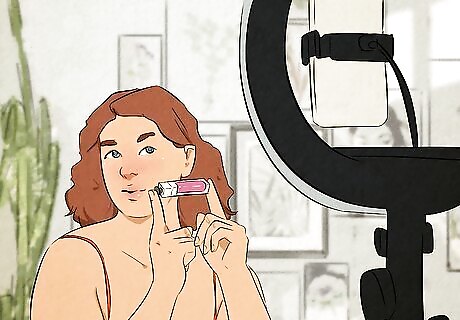
UGC is cheaper than influencer content and faster than making content. With influencers, brands pay for both the content and the exposure to their audience. With UGC, brands only pay for the content itself, which is often the same quality or better, and they have complete control over the content’s distribution. The more reach and engagement an influencer has, the more the brand pays. UGC creators are everyday people, while influencers and content creators are professionals who build a brand and influence culture. UGC also acts as social proof, showing that real people are buying and using a product, which can drive more sales.

















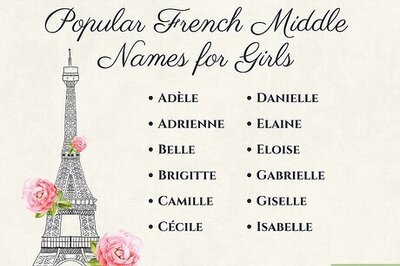

Comments
0 comment